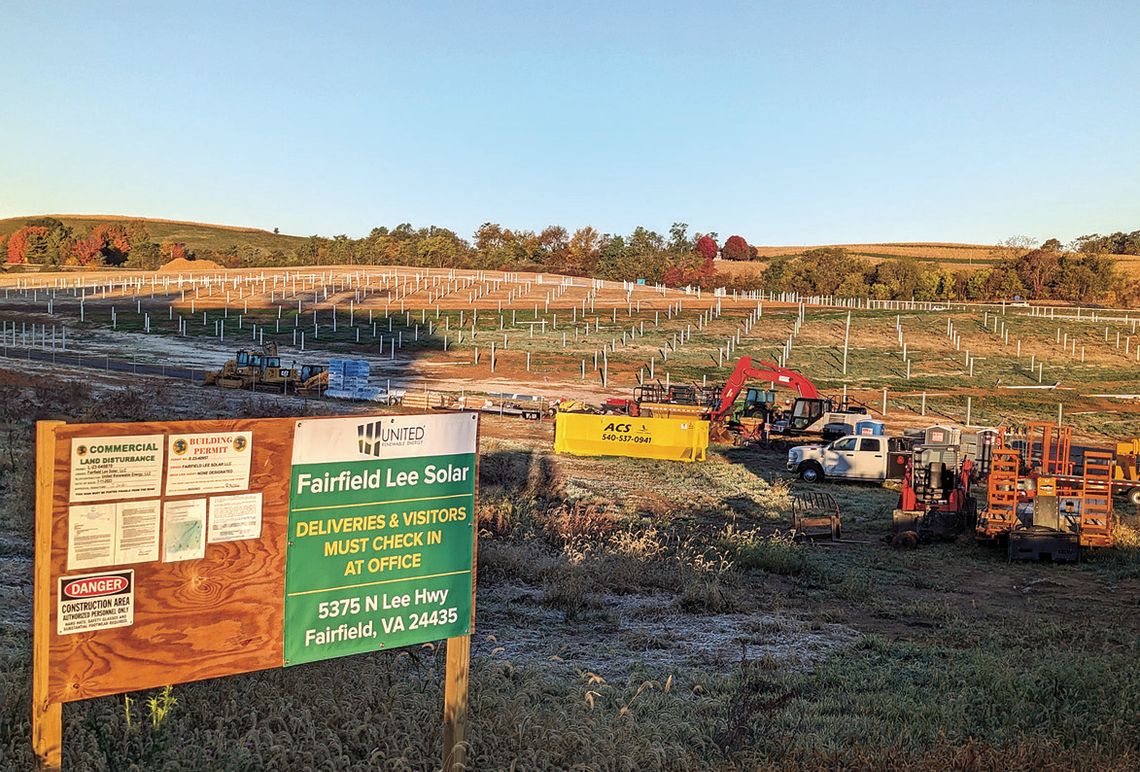If decisions about whether to allow solar arrays on farms were dictated by what is most popular, there would likely be none in Rockbridge County.
When the county Planning Commission earlier this month voted 3-1 to recommend denial of special exception permits for two proposed commercial-scale solar arrays – one on a farm near Raphine and another on a farm near Natural Bridge Station – the lone dissenter in both votes likened the recommendations to the natural outcome of a popularity contest.
Speakers at the public hearings for both proposals were overwhelmingly against having their scenic views of farmland marred by the sight of solar panels. Many labeled the panels as eye sores. “Would you rather see cornstalks or solar panels?” one person asked. Some alleged that the projects posed health risks and that, once in place, would render the land unsuitable for future agricultural use.
The comparison of such a zoning action to a popularity contest is apt. In recent years, when there was little opposition to proposed solar arrays on farms near Rockbridge Baths and in Fairfield, the commercial-scale projects were approved. When neighbors opposed a similar solar array for a farm off of Mackeys Lane near Fairfield last year, the Commission recommended against it and the proposal was withdrawn before the Board of Supervisors could consider it.
What are the criteria for determining whether or not to approve commercial-level solar arrays for farmland? Other than neighborhood opposition, there doesn’t appear to be any specific criteria to base such zoning decisions on. The county, it would seem, is in need of an ordinance that spells out what planners and supervisors should consider when making such decisions.
There was an effort by the Planning Commission, a couple of years ago, to study issues related to solar arrays so that an ordinance could be drafted for this specific purpose. However, the initiative fizzled out before any real progress was made. The Commission appears ready to restart this process. A work session on this subject was held prior to its most recent regular meeting and another one is planned for Nov. 6.
Protecting farmland and safeguarding scenic views are obviously worthy objectives that are found in the county’s comprehensive plan. It is also important that zoning policies take into consideration how we at the local level can contribute to efforts to combat the existential dangers posed by climate change. If we can play a role in creating and promoting renewable energy sources to supplant the burning of fossil fuels, we ought to do it.
If we determine that we are going to set aside a certain amount of land for the placement of solar arrays, what are the criteria to be used for determining where these utility structures are going to go? Should these facilities be along well-traveled roads or in more remote locations, or should that even matter? Should the agricultural quality of the land and soil be taken into consideration?
Fears over whether solar arrays pose health hazards or render land unsuitable for future farm use need to be addressed. If it is found that there is no basis for these fears, we need to discount them. Scientific reasoning – not irrational fears – should guide the process.
Beauty is often in the eye of the beholder. Can solar arrays exist alongside our farms, rivers, lakes and mountains and not diminish too significantly our scenic views? In past eras, we accepted the introduction of power lines, substations and towers, interstate highways and, more recently, cell phone towers. It’s admittedly a balancing act.
Whatever the merits of the most recent proposed solar arrays that will be considered by the Board of Supervisors in the next several weeks, we urge the county planners to move forward with conducting research and drafting an ordinance to guide future such zoning decisions.
These decisions should not be determined by the whims of what is most popular at the moment.
.jpg)



